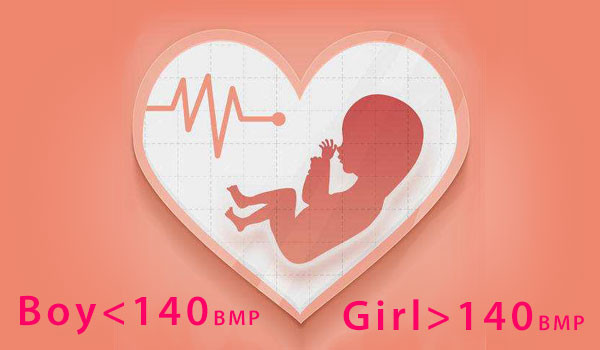If the fetal heart rate (FHR) is less than 140 bpm, it means you are having a baby boy; if the FHR is 140 bpm or above, it means you are having a baby girl.
Fetal heart rate estimation is based on the frequency of fetal heartbeats to speculate whether the pregnancy is a boy or a girl. This is because the congenital differences between boys and girls can be manifested in the embryonic period. Generally speaking, the fetal heart rate of boys is lower than that of girls. However, the estimation of male and female based on fetal heart rate is just a reference. It can be used to predict baby’s gender if the fetal heart rate is stable, which is more accurate.
How to Predict Baby's Gender by Fetal Heart Rate?
1. Fetal heart is the heartbeat of the fetus, which can reflect the state of the fetus in the womb in time. When checking the fetal heart, the frequency can be seen. The position of the fetal heart is different in different times. The special Doppler stethoscope is sensitive to changes in the fetal heart rate when the fetus is hypoxic.
2. Under normal circumstances, the fetal heart rate is 110-160 beats per minute. The fetal heart rate also changes with the change of the uterine environment. The fetal heart rate is the performance of the central nervous system regulation function, and it is also the performance of the fetal state. Generally speaking, the normal fetal heart rate will not exceed 160 beats per minute. It will cause fetal heart rate tachycardia if it exceeds 160 pmb.
3. Check when the fetal heart rate is relatively stable. In normal, it you find more than 5 times that the fetal heart rate is less than 140 pmb in pre-natal examination, you have more chance to get a boy. Those with more than 140 pmb indicates girls. Fetal heart rate monitoring is obviously stable in the late pregnancy, that is, more than 7 months, but multiple checks are required.
You can check if the baby gender prediction is right to you by using the above way. And share your result here.
